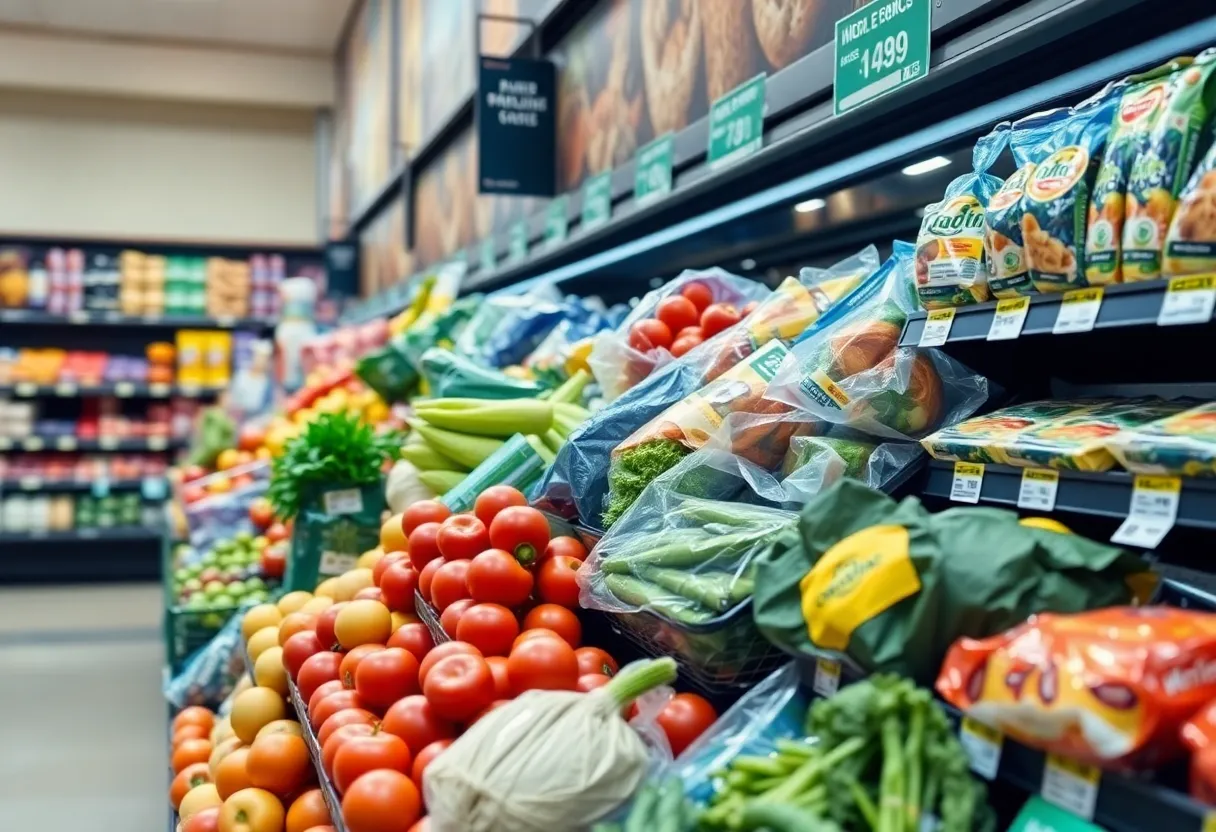News Summary
Grocery prices in the United States have risen by 2.2% over the past year, fueled by inflation rates escalating to 2.4% in May. This trend has raised alarms among consumers and policymakers, particularly during the political campaign leading up to the presidential election. While the Trump administration’s rollback of certain regulations aimed to alleviate costs, tariffs have had the opposite effect. Specific food categories, including fruits and cereals, have seen significant price increases, with overall consumer concern about persistent inflation looming over the economic landscape.
Lexington – Grocery prices continue to rise in the United States, creating increased concerns for consumers and policymakers alike. With inflation rates climbing to 2.4% in May compared to the previous year, grocery prices have seen a noticeable increase of 2.2% over the past year, contributing to the ongoing debate over the economic policies influencing this trend.
Inflation has become a central issue in political discussions, particularly during Donald Trump’s reelection campaign, when 96% of voters expressed concern over high grocery and gas prices. This concern for inflation was significant enough that those prioritizing it were twice as likely to vote for Trump. While Trump has asserted that the Biden administration’s economic policies represent the worst economic management in history, analysis suggests that he inherited a robust economy.
From the start of Trump’s second term, grocery prices in Lexington have shown a slight increase, indicating that the economic conditions are still challenging for many consumers. The government’s role in influencing prices through production regulations and tariffs further complicates the situation. New food safety standards can raise production costs for businesses, ultimately leading to higher prices at the checkout.
The Trump administration’s decision to roll back certain regulations may have provided some relief from rising costs, yet the imposition of tariffs—like the 10% tax on foreign goods—has had the opposite effect. Tariffs tend to create additional expenses for suppliers, who often pass these costs on to consumers. Consequently, grocery prices are expected to continue climbing. When imported goods become more expensive due to tariffs, it can also raise the prices of domestic products as demand shifts toward local offerings.
The price of food items has reflected these trends, with specific increases noted in items like fruits, vegetables, and breakfast cereals. Although egg prices fell by 2.7% last month, they remain over 40% higher than they were the previous year, demonstrating how certain market fluctuations can impact the overall cost of groceries significantly.
In addition to basic grocery items, economists are closely monitoring core prices, which have risen by 2.8% for three consecutive months. This enduring inflation exceeds the Federal Reserve’s target of 2%, prompting concerns that companies may soon raise prices further to mitigate the effects of tariffs and other cost pressures.
The economic landscape suggests that U.S. consumers should prepare for increasing prices across a range of goods, especially groceries. Companies, having temporarily absorbed the higher costs associated with tariffs, are expected to begin passing these costs onto consumers. For instance, Smucker’s Coffee has indicated plans for a price increase scheduled for August due to tariff-related impacts on green coffee imports.
Additionally, recent concerns about reduced data collection for inflation reporting could render future inflation figures more volatile, resulting in a less stable outlook for consumers and economic observers. There is also the possibility that Trump’s universal tariffs on imported goods, alongside heightened tariffs on specific countries like China, have yet to fully filter through to consumer prices.
While there have been price reductions in some categories, such as cars, clothing, and airfares, rising grocery prices continue to dominate consumer concerns. As the United States grapples with persistent inflation and its implications for everyday life, the relationship between economic policy and consumer prices remains a focal point of interest and analysis.
Deeper Dive: News & Info About This Topic
HERE Resources
Kentucky Schools and Food Bank Address Summer Childhood Hunger
Grocery Prices in Lexington Continue to Climb
Lexington, Kentucky Recognized as Top Retirement Destination
Community Comes Together for Unity Picnic in Lexington
Concerns Rise Over Trump’s Trade Policies
Black Soil’s Farmacy Neighborhood Market to Open in Georgetown
Kroger CEO Resigns Amid Internal Conduct Investigation
Cincinnati Employees Face Layoffs as Kroger Restructures
Lexington Bakeries Struggle With Rising Egg Prices
New Tariffs Imposed by the U.S. Spark Trade Tensions
Additional Resources
- Toledo Blade: Inflation Rose Slightly
- Wikipedia: Inflation
- PennLive: Inflation Rose Slightly
- Google Search: Grocery Prices
- NBC News: Grocery Price Tracker
- Google Scholar: Inflation and Grocery Prices
- NBC News: Bacon Prices and Inflation
- Encyclopedia Britannica: Inflation
- Progressive Grocer: Food Prices
- Google News: Inflation Grocery Prices

Author: STAFF HERE LEXINGTON KY STAFF
The LEXINGTON STAFF WRITER represents the experienced team at HERELexingtonKY.com, your go-to source for actionable local news and information in Lexington, Fayette County, and beyond. Specializing in "news you can use," we cover essential topics like product reviews for personal and business needs, local business directories, politics, real estate trends, neighborhood insights, and state news affecting the area—with deep expertise drawn from years of dedicated reporting and strong community input, including local press releases and business updates. We deliver top reporting on high-value events such as Woodland Art Fair, Crave Food and Music Festival, and Railbird Festival. Our coverage extends to key organizations like Commerce Lexington and Blue Grass Community Foundation, plus leading businesses in education, manufacturing, and technology that power the local economy such as University of Kentucky, Toyota Motor Manufacturing, and Lexmark. As part of the broader HERE network, including HEREBowlingGreen.com and HERELouisville.com, we provide comprehensive, credible insights into Kentucky's dynamic landscape.





